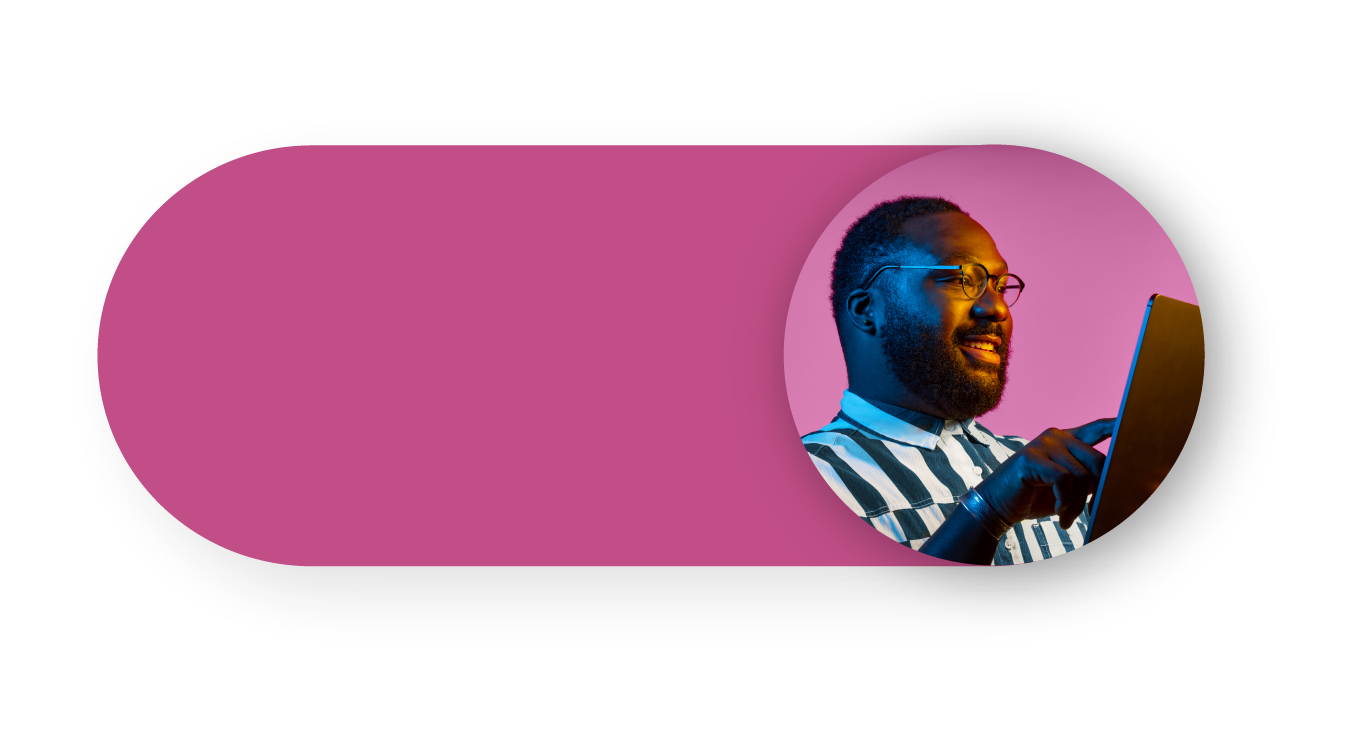Smartsheet Future of Work Management Report 2023
Project management is only as successful as the processes that support it
January 2023
Methodology
The inaugural Smartsheet Future of Work Management Report survey was conducted in September 2022 by Wakefield Research among 8,000 employed adults aged 18-74, who work at companies with a minimum of 50 employees, evenly distributed among the following markets: United States, UK, Australia, and DACH (Germany, Austria, Switzerland). All respondents self-reported that they engage in project-based work, defined as “projects that have a beginning and an end.”
These project professionals — who represent about 60% of the adult employed audience who work in companies with 50+ employees — span a wide range of industries, including IT, business services, healthcare, pharma, banking, finance, construction, and manufacturing. They also span a wide range of titles and levels within their organizations, including C-suite and senior executives (13%); upper and middle management (28%); and individual contributors like analysts, account leads, and other specialists (27%), administrative support staff (15%), frontline workers (15%), and those who define their work as “other” (2%).

Introduction: The current state of project management
In today’s business world, project-based work is, quite simply, the way of work. It’s increasingly likely that you’ll find yourself managing a project, too — regardless of if you have formal training, proper tools, or “project manager” in your title.
Long story short, in organizations that handle any kind of project-based work everyone is a project manager. In fact, over 80% of respondents said that project management is being done at least sometimes by someone whose title or job description does not contain “managing projects.”
Distinct groups of project managers
While almost everyone today manages projects, that doesn’t mean that everyone has the same level of project management experience. In fact, the survey surfaced the following three distinct groups of project managers:
So-called citizen project managers fall into project management for a variety of reasons. Most commonly, it’s simply out of necessity — 65% say they adopt project management responsibilities because no one else steps into the PM role, team members leave the company, or they need to briefly fill-in for someone else. Additionally, 45% of citizen project managers say they manage projects simply because their supervisor asked them to, which points to the ad-hoc nature of this responsibility.
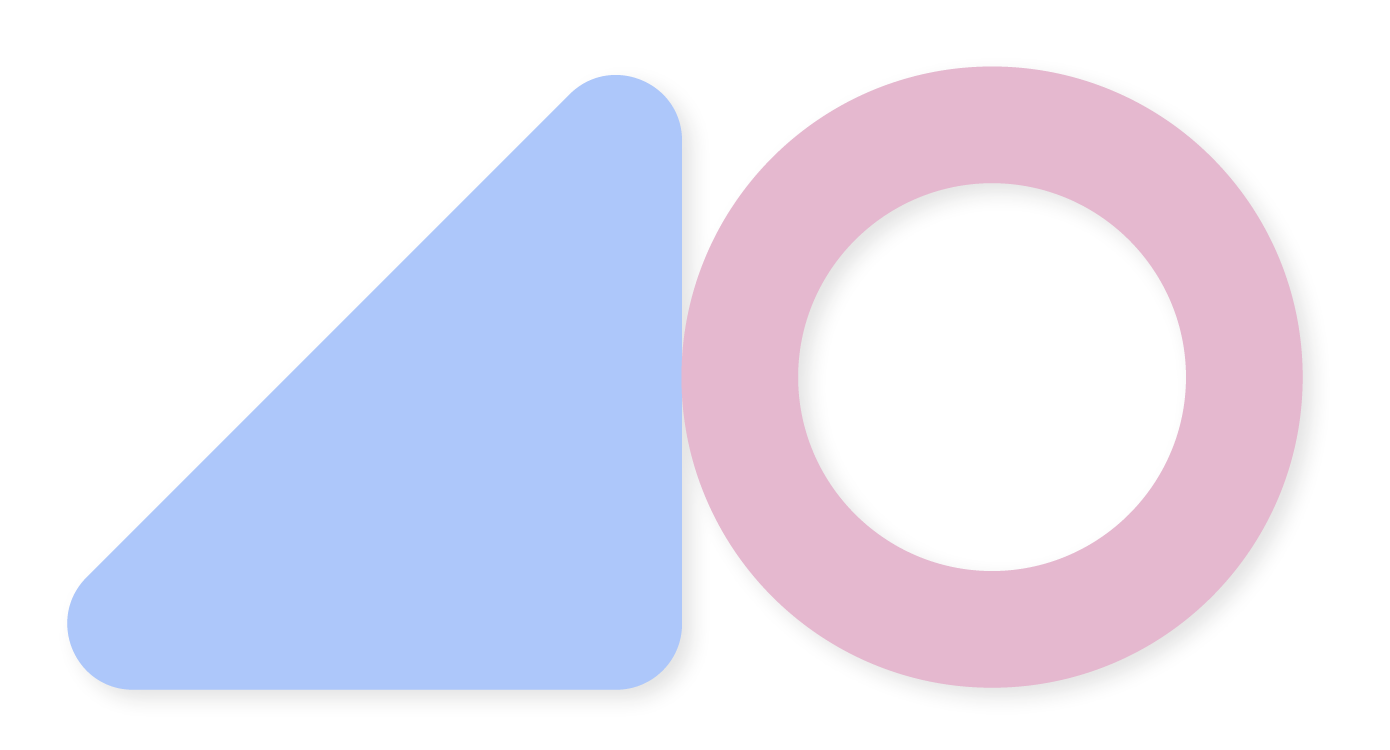

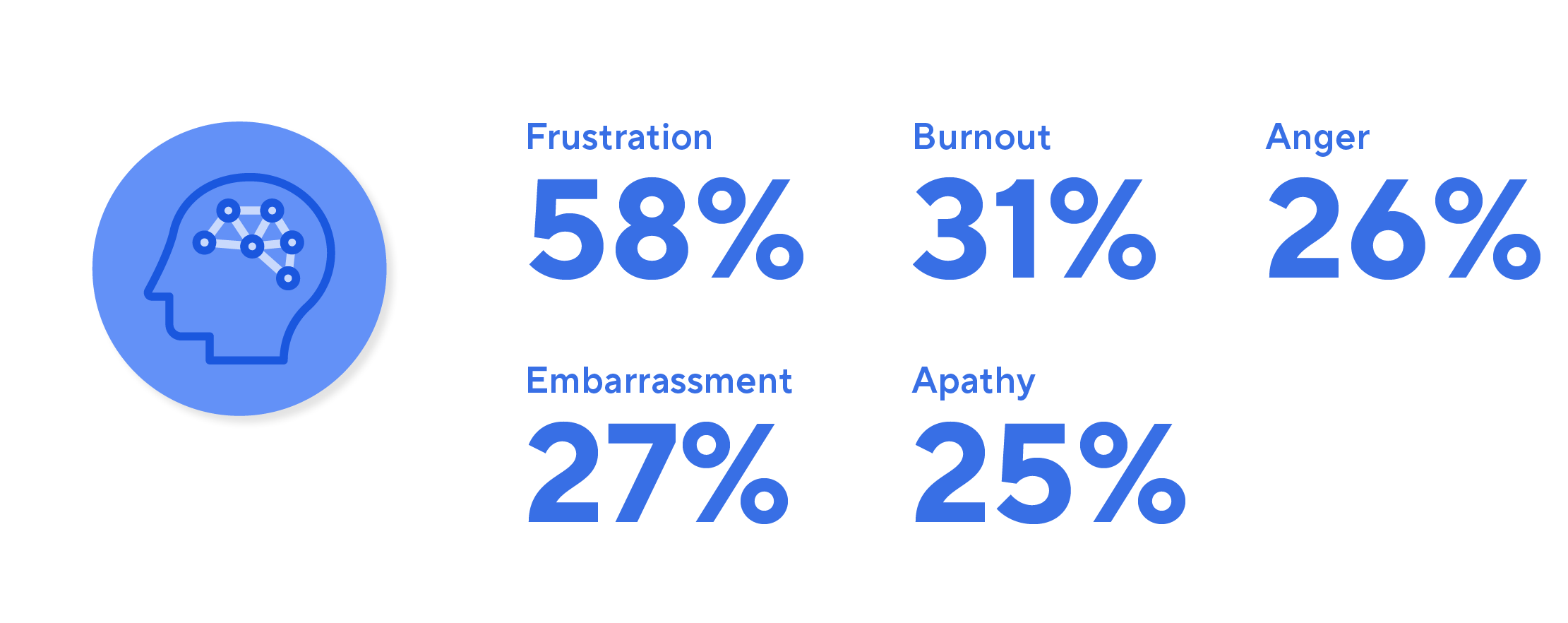

Pain points endure across project management groups
Interestingly, these three distinct groups of project managers — all of whom have different levels of experience — all report similar pain points around the state of project management today.
Nearly all respondents (91%) say their organization faces project management challenges, whether it’s due to employees being shuffled from project to project (45%), remote work (40%), extended time leave (34%), or other reasons. Of the people who experience these challenges, 85% say they are overwhelmed by project pace and deadline.
People report negative emotions as a result of this dysfunction, too: When projects break down, frustration is the principal emotion (58%), followed by burnout (31%), embarrassment (27%), anger (26%), and apathy (25%). As a result, nearly 30% report direct career consequences, like looking for another job or missing a promotion.
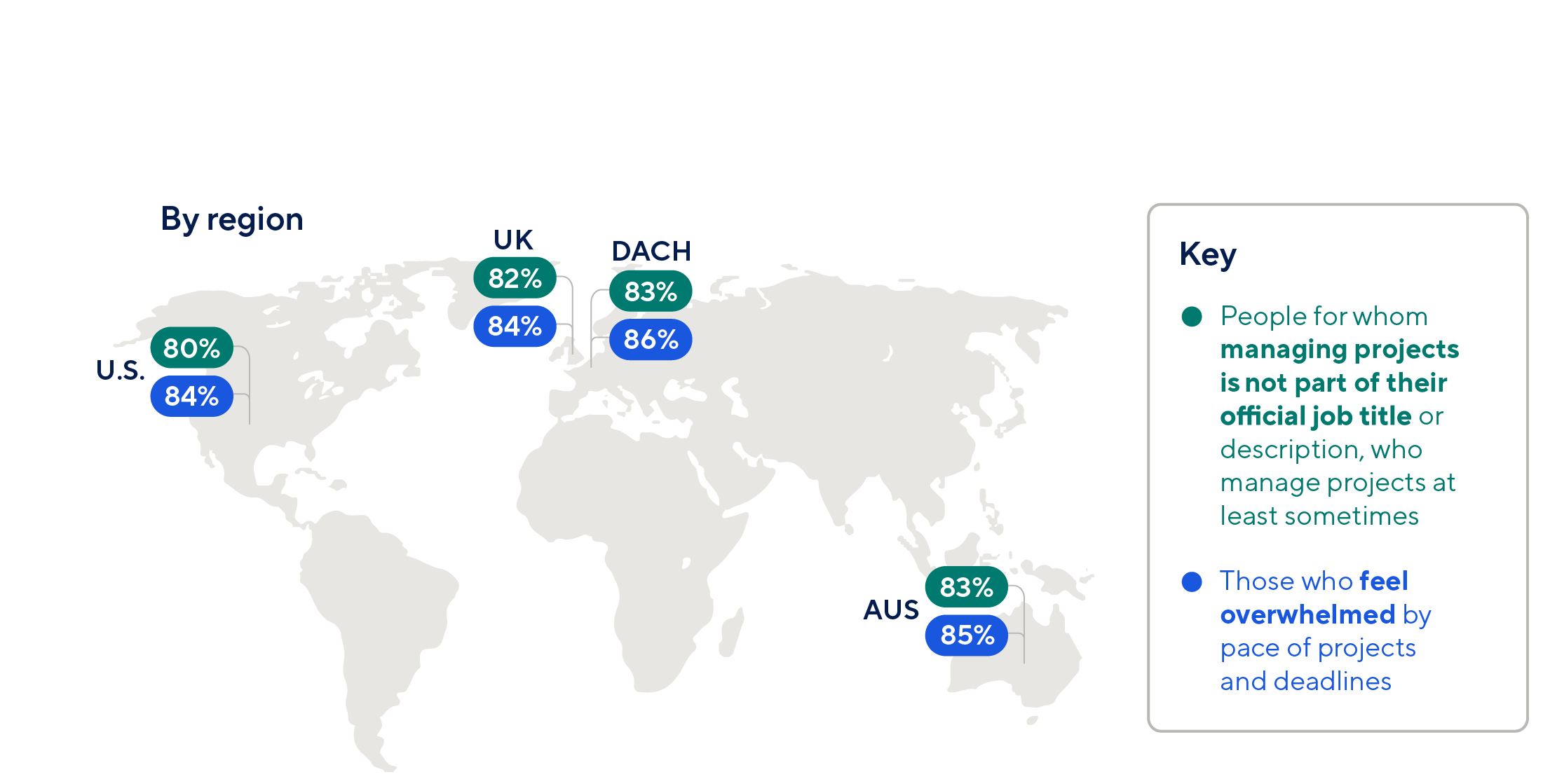
Pain points reflected across regions and company size
It’s important to note that these challenges are not specific to a single region or company size, but rather, are reported at similar rates across demographics.
While the survey spanned seven countries in four distinct markets, the reported challenges stayed remarkably consistent across all.

Taken together, these responses — across titles, regions, and company size — paint a clear picture: In its current state, project management is neither sustainable nor optimized for success. And, no one is exempt from the challenges that result from poor project management, which not only impact business outcomes, but also carry an emotional toll on the wellbeing of employees.
So, the question becomes: If project-based work is here to stay, how can we move forward in a way that consistently drives success — both in terms of business metrics and employee wellbeing?
Pain points endure across project management groups
Interestingly, these three distinct groups of project managers — all of whom have different levels of experience — all report similar pain points around the state of project management today.
Nearly all respondents (91%) say their organization faces project management challenges, whether it’s due to employees being shuffled from project to project (45%), remote work (40%), extended time leave (34%), or other reasons. Of the people who experience these challenges, 85% say they are overwhelmed by project pace and deadline.
People report negative emotions as a result of this dysfunction, too: When projects break down, frustration is the principal emotion (58%), followed by burnout (31%), embarrassment (27%), anger (26%), and apathy (25%). As a result, nearly 30% report direct career consequences, like looking for another job or missing a promotion.
Pain points reflected across regions and company size
It’s important to note that these challenges are not specific to a single region or company size, but rather, are reported at similar rates across demographics.
While the survey spanned seven countries in four distinct markets, the reported challenges stayed remarkably consistent across all.
Taken together, these responses — across titles, regions, and company size — paint a clear picture: In its current state, project management is neither sustainable nor optimized for success. And, no one is exempt from the challenges that result from poor project management, which not only impact business outcomes, but also carry an emotional toll on the wellbeing of employees.
So, the question becomes: If project-based work is here to stay, how can we move forward in a way that consistently drives success — both in terms of business metrics and employee wellbeing?
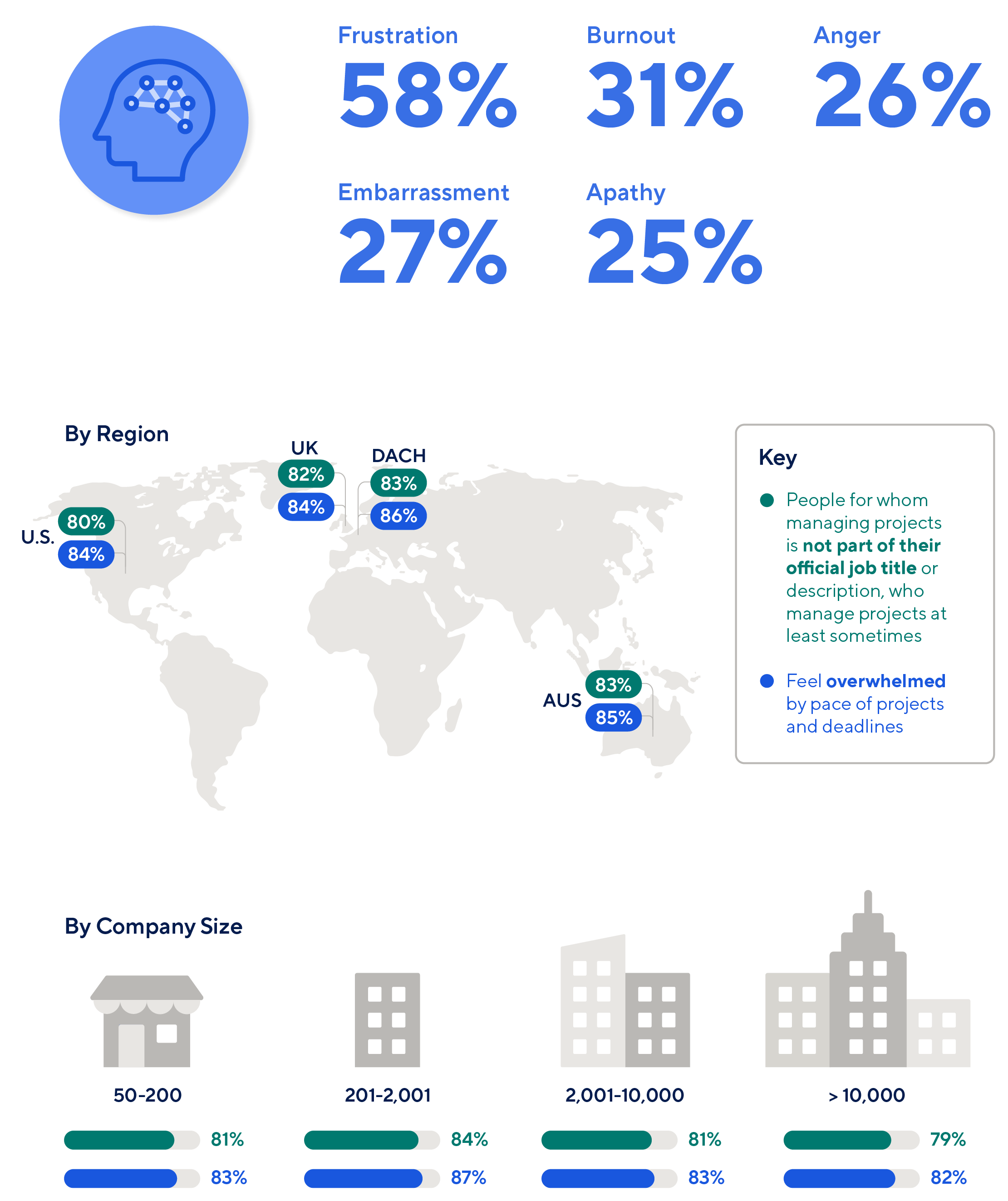
Taken together, these responses — across titles, regions, and company size — paint a clear picture: In its current state, project management is neither sustainable nor optimized for success. And, no one is exempt from the challenges that result from poor project management, which not only impact business outcomes, but also carry an emotional toll on the wellbeing of employees.
So, the question becomes: If project-based work is here to stay, how can we move forward in a way that consistently drives success — both in terms of business metrics and employee wellbeing?
Three key findings to make project management more manageable
Successful project management will require a major mindset shift, away from one-off projects and toward building repeatable, scalable processes that enable seamless project work and improved collaboration across teams.
To help support this transition, we’ve identified three key findings:
In the following sections, we’ll take a closer look at each of these points. We’ll examine the survey data that leads to these takeaways, and explore how these pain points are affecting your bottom line. Then, we’ll provide actionable recommendations for how to make changes that better connect your people, projects, and processes with the goals of your organization.

Key finding #1: The day-to-day project work is what matters most
Like all good stories, the phases of a project include a beginning (planning), middle (execution), and end (deadline). But, there is often a disproportionate amount of stress felt around — and effort applied to — meeting the deadline.
Yes, deadlines have always been an important part of ensuring that work gets done. And, the reality is that deadlines (and the stress that comes with them) are here to stay: About 50% of project professionals expect deadlines to stay the same moving forward, and 26% expect that their timelines will compress.
But, while it can be tempting to focus on these ever-tightening deadlines as the source of a project’s tensions, they aren’t the real make-or-break factor of project success. In other words, a longer deadline may not improve the likelihood of success, and a tight turnaround doesn’t necessarily mean you’re destined for failure.
Instead, the key is to focus on the middle work: the work that happens day in and day out as teams work to complete a project, such as establishing reliable workflows, incrementally completing smaller tasks, communicating well, and collaborating as a team.
While project planning and deadlines are still critical pieces of the puzzle, this daily execution work (and the manner in which it’s carried out) is what really determines project success. Essentially, how a team carries out this middle work is a better indicator of project success than whether or not they’re able to meet a deadline.
The cost of project dysfunction
The biggest hurdles to project success are a result of dysfunctional middle work, not the ability to meet a deadline. Commonly reported project issues include duplicating work that has already been done (37%), throwing out unneeded or irrelevant work (27%), and sending out outdated or incorrect information (23%).
People also suffer professional consequences as a result of consistent breakdowns within middle work. Twenty-nine percent of respondents have seen responsibilities reduced or taken away, and 13% have experienced or seen someone removed from a project entirely. What’s more, these consistent issues negatively impact people’s work-life balance: 50% of respondents say they have experienced or seen the need to work longer hours.
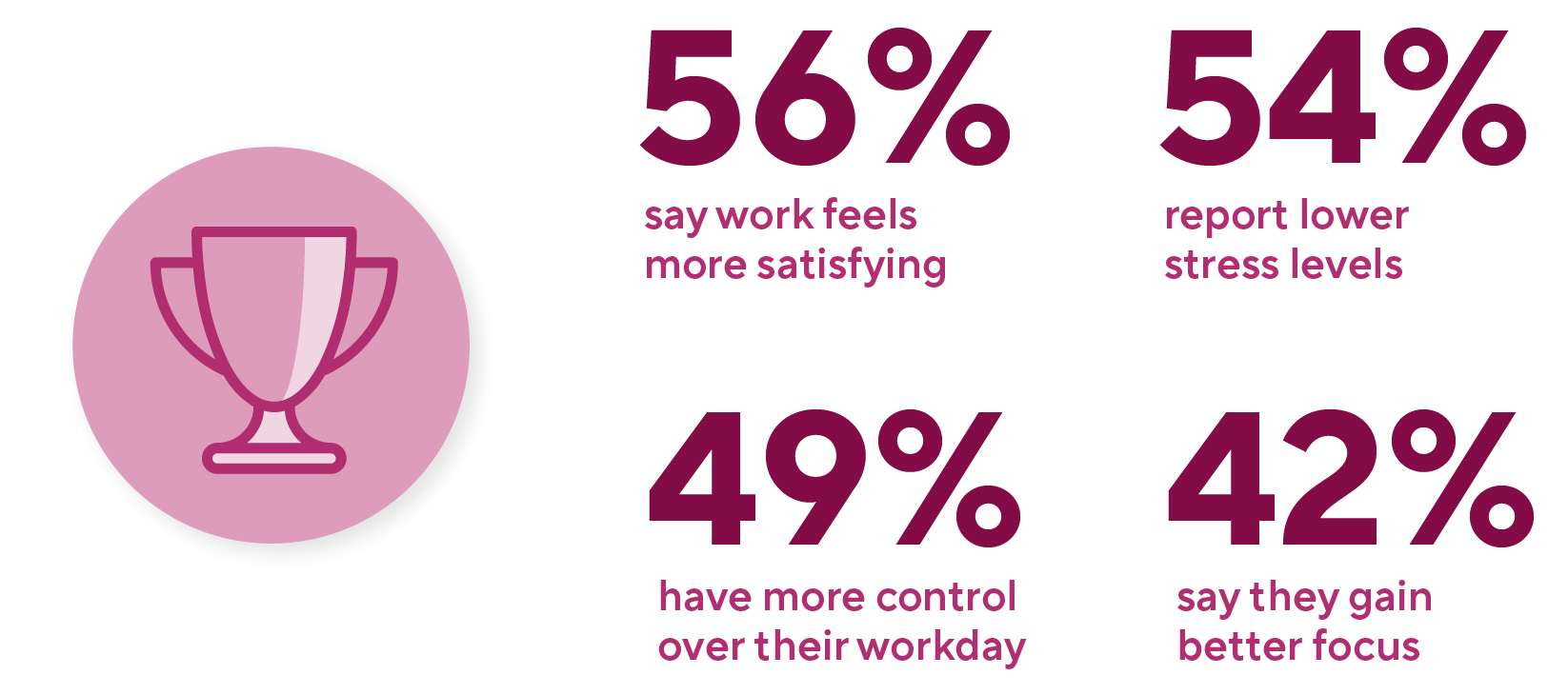
Smoother middle work leads to greater project success
There is a silver lining to all of this, though. If you allocate more time and effort to improving the middle work, you have the opportunity to optimize project management for continued success — and, not to mention, to improve team morale.
According to survey respondents, when projects run smoothly (as opposed to simply being delivered on time), people notice that the work feels more satisfying (56%), that stress levels are lower (54%), and that they have more control over their workday (49%). Smoother-run projects also enable team members to gain better focus on their project contributions while at work (42%).
These benefits have positive ripple effects, too. Well-run projects tend to prompt improved work relationships, both among colleagues (47%) and company leaders (41%). These benefits also extend outside of work: When projects run smoothly, respondents say that they have more energy for relationships and activities (36%) and spend less time thinking about work once the workday ends (30%).
This is especially important in today’s distributed workforce, where isolation and burnout (often as a result of poor work-life boundaries) are increasingly common.
The bottom line: Embrace the middle work
Improving project success will require a substantial shift — from fixating on deadlines to committing to running projects more smoothly by putting more focus on the steps and resources needed to do so. In order to maximize an organization’s success, both in terms of delivering strong results and improving employee wellbeing, the key is to focus on making the day-to-day middle work run as smoothly as possible.

Key finding #2: Your team needs more tools and resources to be successful
The good news is, across all levels of the organization, there is clear consensus that when project management is done well, the organization and its people are more effective. Project professionals, from the C-suite to those in execution roles, say that projects run by experienced project managers results in higher work quality (57%), greater efficiency (49%), staying on budget (42%), work being completed on-time (39%), and increased collaboration (40%).
But even if you understand the benefits of effective middle work, how do you facilitate the transition to smoother-running projects? First thing’s first: Organizational leaders need to take accountability for the support that teams desperately need.

Mining the gap between senior leaders and the rest of the company
The survey revealed that there’s a huge disconnect between leaders and individual contributors about what adequate support actually means. While 60% of senior leaders say their company is making the necessary investments in the tools needed to address common project complications, only 36% of non-C-level individuals say this is the case.
Taken another way, only 20% of C-suite leaders feel that project teams are typically understaffed, compared to 36% of upper management, 41% of middle management, and 43% of people actually doing the work (e.g., individual contributors, front-line staff, or junior level management). And, looking ahead, 72% say their company is likely to ask project teams to accomplish more with less.
This reveals a critical disparity between leadership and the rest of the company — both in regard to present state and future capacity. In order to address these problems before they spiral out of control, it’s imperative that the C-suite and senior leaders understand the tactical needs of their teams — and then, commit to meeting them.

Project management software is underutilized
One form of support is project management software, which is designed to support the specific tasks and projects that teams undertake. Unfortunately, only 35% of respondents report using these tools to do their job. Among citizen project managers (a group we already know is rapidly growing and severely under-resourced), only 11% use project management software.
This is a massive missed opportunity for organizations of all industries and sizes, who can realize time, money, and resource savings by implementing project management software. Furthermore, 78% of project professionals who use dedicated project management software say their company’s approach supports work-life balance, compared to 67% of those who use generic software and 57% of those who don’t use any software at all to manage projects.
Teams need the right support to meet their goals
In order to improve project success and employee wellbeing in the long term, organizations must understand what “sufficient support” looks like, and invest in adequate tools and resources for all those working on project-based work. The bottom line: Your people are asking, now it’s up to you to deliver.

Key finding #3: Projects are only as strong as the processes they’re built on
Even if you can manage a single project to success, you’ll need strong, repeatable processes in order to scale that effort. It’s no longer useful to think about projects as one-off initiatives because, in reality, project-based work is always happening, and the success of this ongoing work is directly tied to the strength and scalability of the processes that support it.

Teams need greater visibility into past projects and lessons learned
In order to build strong processes, you first need visibility into the learnings from past projects. Unfortunately, this information isn’t reliably available: While 94% rely on learnings from other projects to do their job effectively, 85% say they run into challenges accessing these learnings. And, 35% percent of survey respondents say that learnings around project processes are not regularly shared across the organization.
One way to combat these information silos is to implement project management software that gives teams visibility into all work happening across the organization — and allows you to capture and archive past project information. Among survey respondents who use formal work management software, 70% said they have the opportunity to gain insight into what does and doesn’t work on a regular basis.
Having reliable access to past project data will enable you to review what is and isn’t working. Then, leverage these lessons learned to create streamlined, repeatable processes. This is a critical piece of elevating the way work gets done — both in order to get each individual project across the finish line, and to scale your efforts for long-term success.
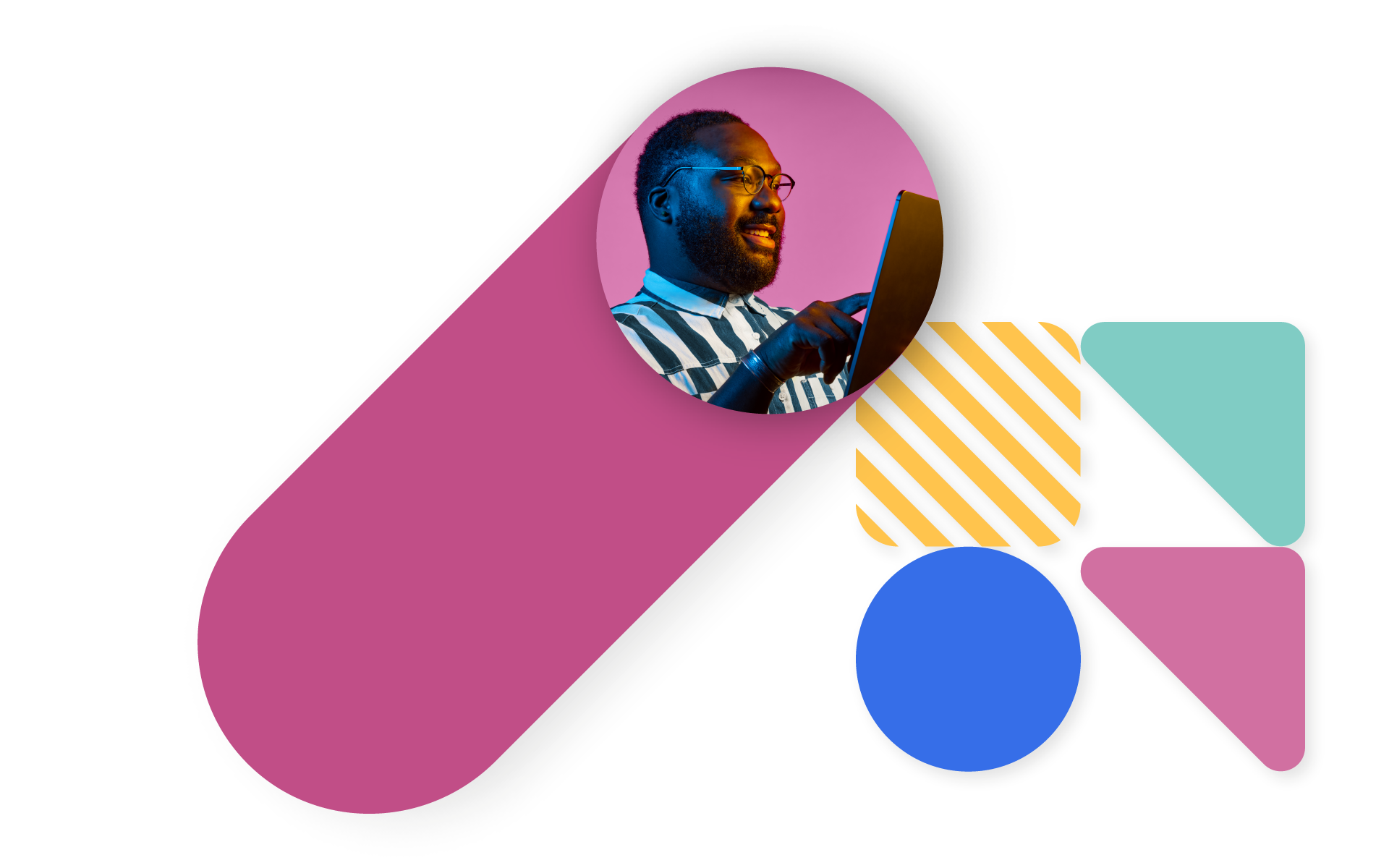

Maximize efficiency, minimize manual work
Once you’ve developed solid, repeatable processes, it’s worth looking for opportunities to further eliminate redundancy and save time — namely, by reducing manual processes. Odds are, your organization still relies on at least some manual work: 53% of respondents say they use time-consuming manual processes to send progress updates and reminders to project teams.
Project management software can help you automate certain tasks, reminders, and updates, which offers up more time for your team to focus on the most impactful work. In fact, over 50% of those using project management software have shifted to automated processes, compared to only 30% of those without software.
Automation helps increase visibility, too — 45% of those using project management software report getting regular updates on projects that could impact them, versus 21% who don’t use any at all.
It’s time to move from a project to a process mindset — and you can leverage tools to do so
This brings the case for project management software full circle: Not only does it help you create scalable, repeatable, automated processes to drive projects forward, but it also provides visibility into projects — both past and present — that helps you continually refine, strengthen, and optimize those processes. Ultimately, it’s the process that will make you powerful — and project management software can help you get there.
Conclusion: Continued organizational success hinges on smoother project and process management
If there’s one thing we learned about project management over the last year, it’s that everyone partakes in it — regardless of whether or not they are “official” project managers. In order to rise to the occasion and deliver on company objectives, everyone needs solid, sustainable ways to get projects from start to finish, time and time again.
This is especially critical for the growing population of citizen project managers, who typically lack the tools required to do their job well. Strong project management software can help fill the training and experience gaps felt by this group, as it can provide real-time visibility and boost cross-team collaboration.
Successful project management requires a mental shift — away from one-off, siloed projects and toward continuous, integrated, and collaborative project-based work. Doing so calls for three key imperatives:
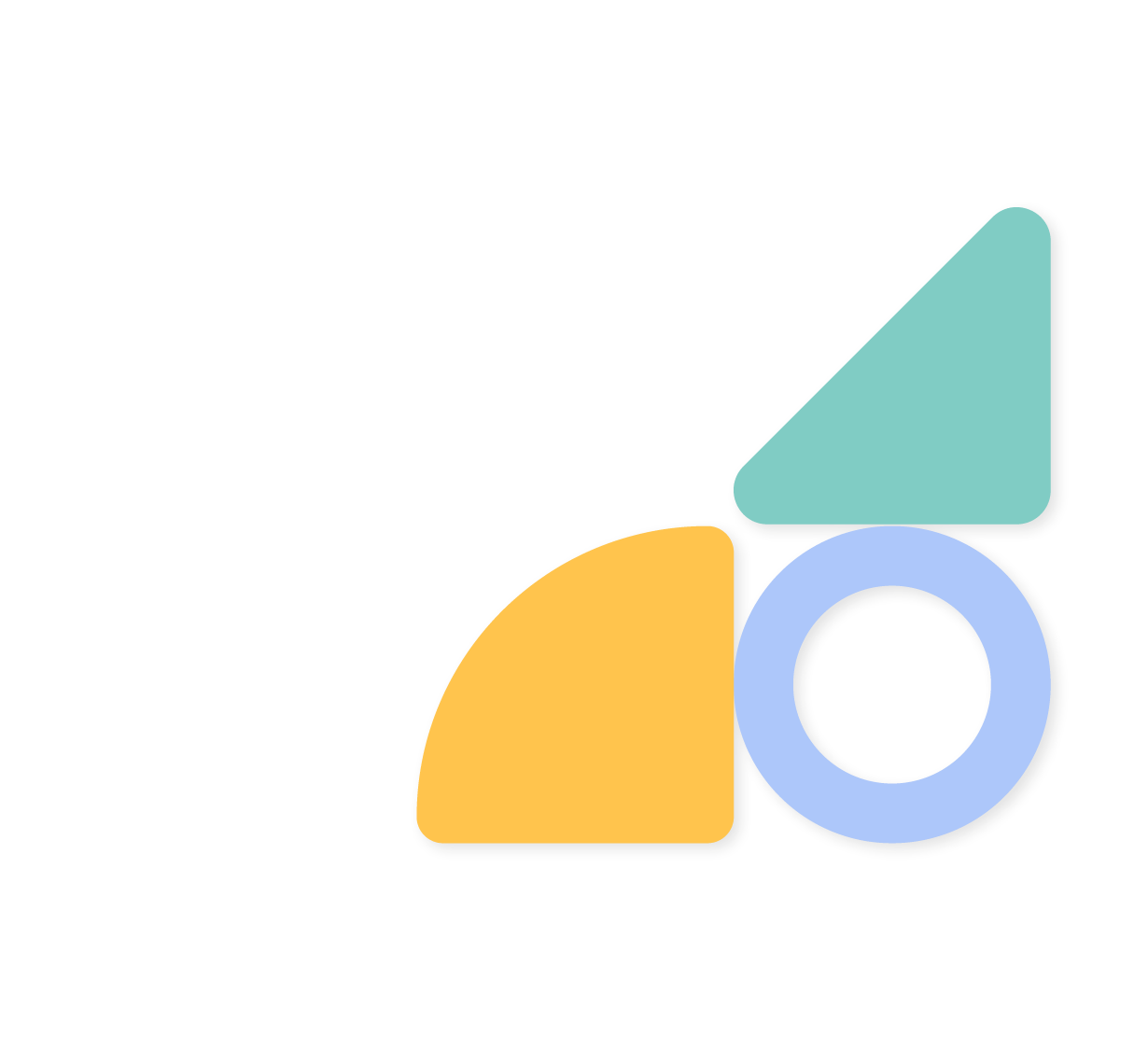

This shift won’t happen overnight, but with the right tools in place, it’ll become faster and easier over time. Project management software — designed specifically to ease the burden of common project challenges — can help you gain visibility into work, automate repetitive tasks, and build streamlined processes to take you from individual project delivery to sustained, organization-wide progress.


